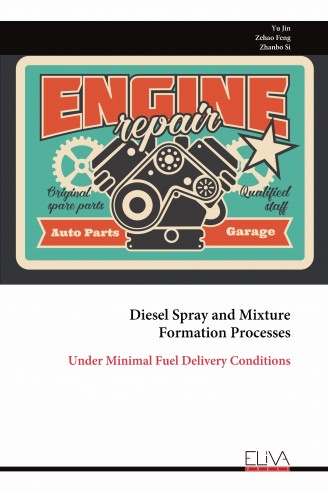Descripción
Dejar revisión
Descripción
This book presents an experimental study on diesel spray and mixture formation under both evaporating and non-evaporating conditions in a constant volume chamber. Using tracer laser absorption and scattering (LAS) and diffused background illumination (DBI), the study characterizes spray development and mixture formation. A tracer fuel of 97.5 vol% n-tridecane and 2.5 vol% 1-methylnaphthalene (α-MN) was used to examine liquid and vapor phase distributions during evaporation. Microscopic observations compared near-field spray behavior in transient and quasi-steady states under non-evaporating conditions. Additionally, numerical simulations of nozzle flow provided insights into how nozzle geometry affects spray characteristics. The study compares the effects of small and large injection amounts on spray behavior, using 0.5 and 2.5 mg/hole for LAS experiments and 5.0 mg/hole for microscopic observations. Results show that smaller injection amounts lead to faster dilution but slower evaporation. Single-hole injectors exhibited a shorter transient period compared to multi-hole injectors under non-evaporating conditions, highlighting the impact of nozzle design. To further investigate transient spray behavior, rail pressure was adjusted to 30 MPa to match multi-hole injector profiles at 100 MPa. Injection amounts were controlled around 0.5–0.6 mg/hole. The study found that single-hole injectors had worse vapor penetration, smaller spray angles, and lower turbulent kinetic energy than multi-hole injectors, resulting in less efficient mixture formation. Simulations confirmed that multi-hole injectors induce higher turbulence, enhancing mixture formation. The book also examines split injection strategies, focusing on split ratio and dwell time. A 7:3 split ratio was optimal for achieving a homogeneous lean mixture. The improvement in mixture formation was minimal when dwell time exceeded 120 μs, and shorter penetration was observed with negative dwell times.

